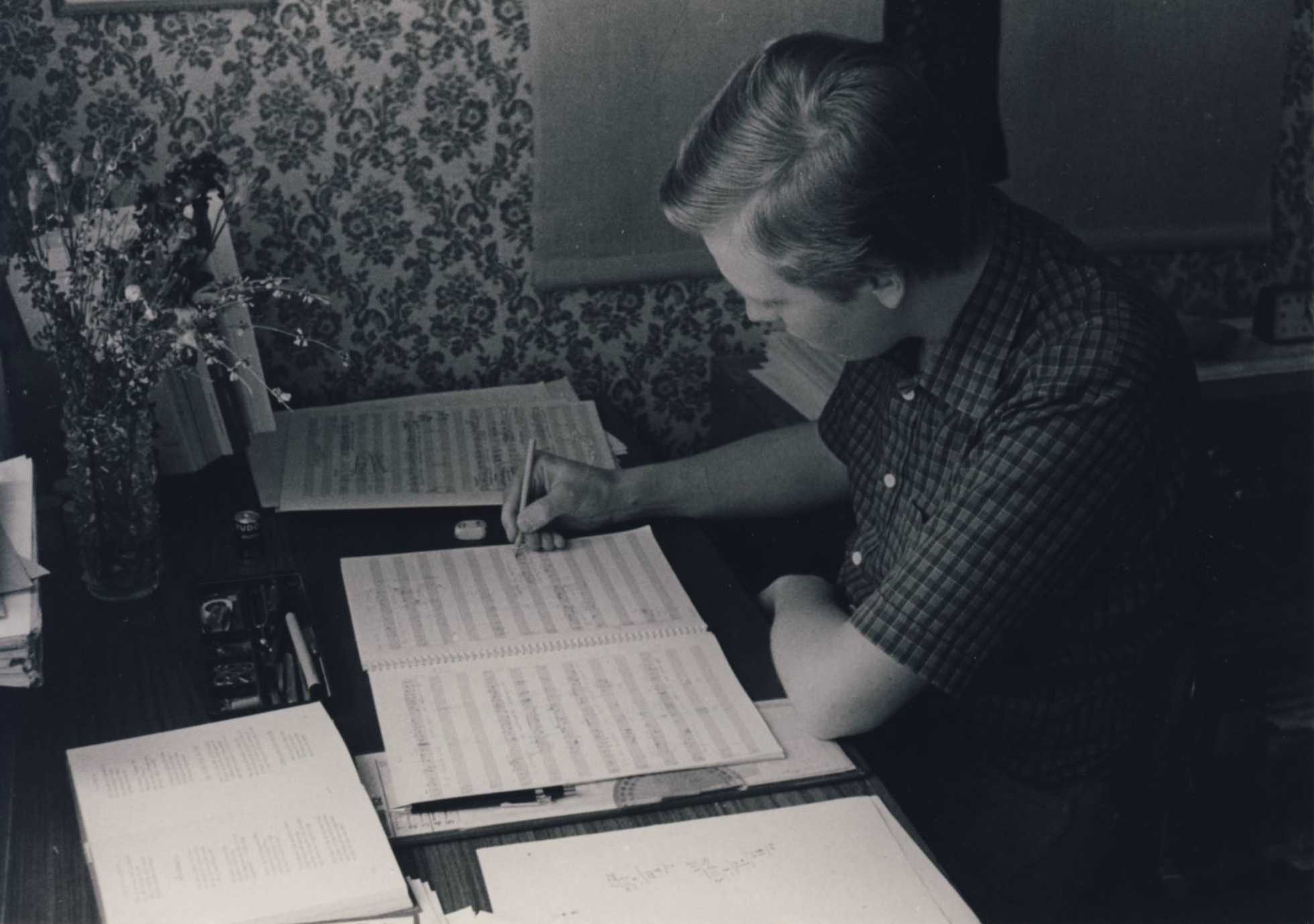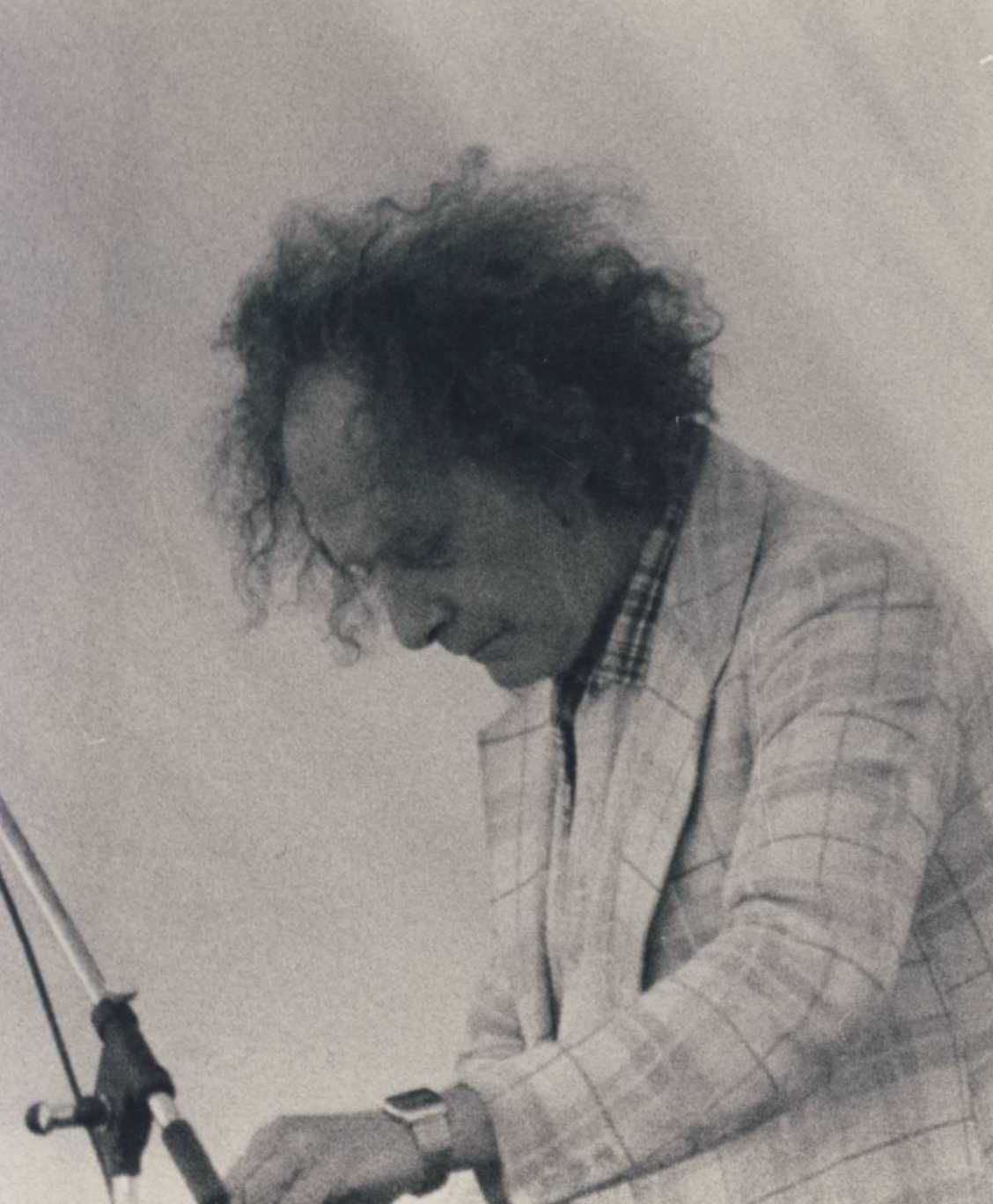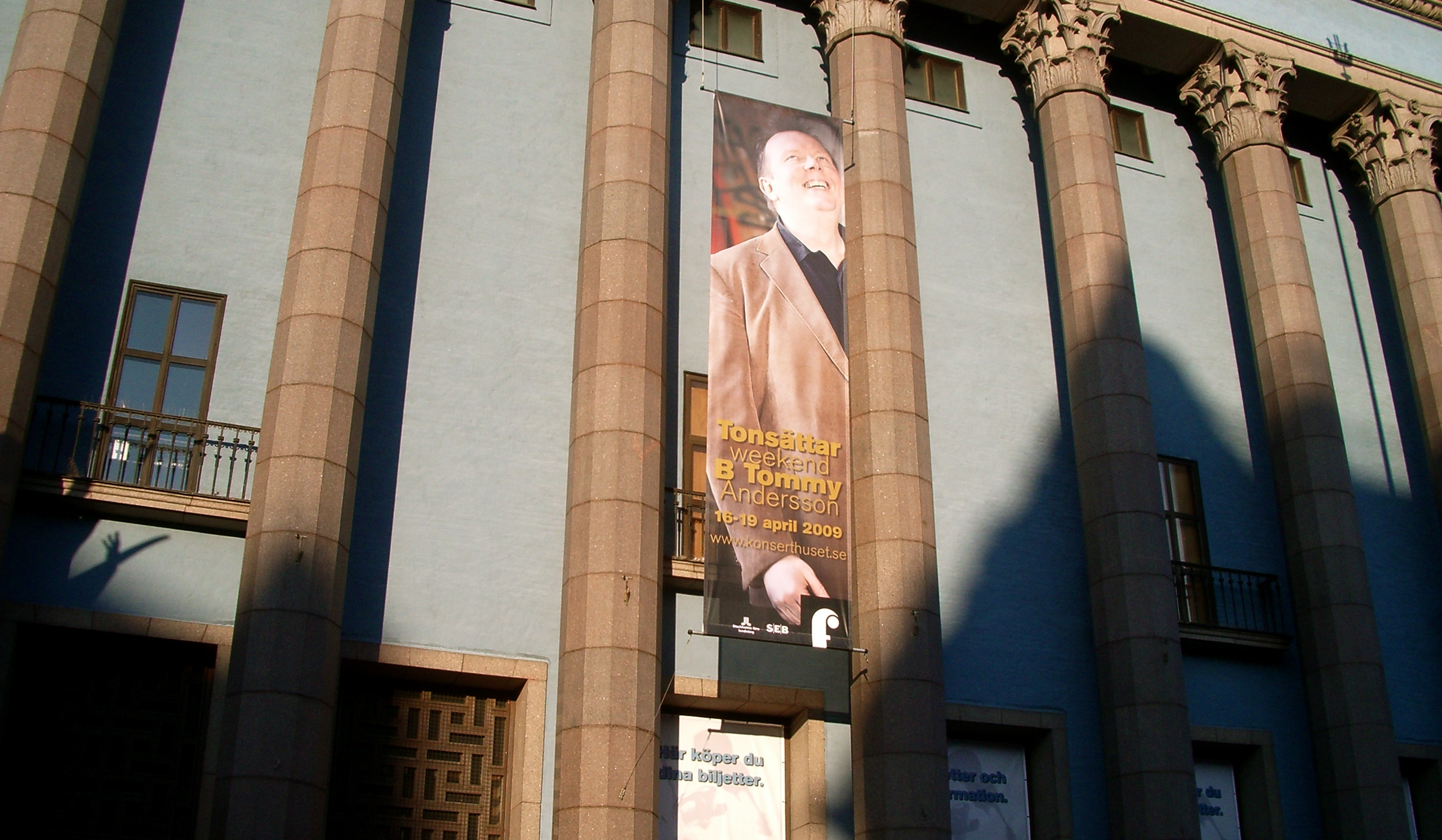Life Story as a Composer
|
B. Tommy Andersson composed music already at the age of 11. At that point, mostly small pieces for one or two violins, but he soon became interested in writing pieces on a larger scale. The first piece of Andersson’s music performed in public was the Prelude and Fugue in F major for organ, performed by Lars-Erik Bernvill in Sandhult Church, 20 May 1979.
|
 At fourteen years old, he started to study orchestration with a local conductor in Borås, Jan-Anders Eriksson, who generously gave his time and advice to his young student. He also studied harmony and counterpoint with an elderly military band leader, Arne Ask. In the spring of 1980, a larger orchestral piece, Trolle-Ljungby Horn och Pipa, was performed by the local youth symphony orchestra in Borås. This, of course, inspired Tommy to learn even more about composition. During the Borås years, the local music school continuously commissioned him to write musical arrangements and he had many opportunities to listen to what he had composed or arranged.
At fourteen years old, he started to study orchestration with a local conductor in Borås, Jan-Anders Eriksson, who generously gave his time and advice to his young student. He also studied harmony and counterpoint with an elderly military band leader, Arne Ask. In the spring of 1980, a larger orchestral piece, Trolle-Ljungby Horn och Pipa, was performed by the local youth symphony orchestra in Borås. This, of course, inspired Tommy to learn even more about composition. During the Borås years, the local music school continuously commissioned him to write musical arrangements and he had many opportunities to listen to what he had composed or arranged.
|
|
On the photo to the left: B Tommy Andersson, December 1981, composing Syllogismer for soprano and piano.
|
|
During his high school years in Borås, he also studied composition with composer Sven-Eric Johanson in Gothenburg (1981—83). Andersson was quite productive during these years (writing about 25 compositions), considering that he also went through high school and in addition played several instruments. The studies with Johanson focused on counterpoint in Palestrina-style (according to Knud Jeppesens textbook), twelve-tone technique (according to Ernst Krenek’s principles) and Paul Hindemith’s Unterweisung im Tonsatz.
|
On the photo above to the right: Sven-Eric Johanson
in concert at Kungstorget, Gothenburg, 11 June 1982.
|
In the course of his studies in the music teacher’s class in Stockholm, from the Autumn of 1983, he took composition lessons with Hans Eklund and Professor Sven-David Sandström. At first, he continued to compose regularly and received several commissions. During the years 1991–2001, B. Tommy Andersson was focusing on establishing his conducting career. That is the reason why so few pieces were composed during this period. Nevertheless, three larger works were created; the Horn Concerto, Apollo — the successful concerto for solo percussion and orchestra, written in 1995 for Markus Leoson, and Satyricon. Furthermore, quite a few arrangements, orchestrations, transcriptions for symphonic band and adaptations for chamber orchestra were made during these ten years. Several of them (but not all) are listed under Arrangements on this website.
|
Since the turn of the century, his music has increasingly attracted more attention and several larger pieces have been commissioned and performed (Here you will find a list of all compositions). Among these we find an opera, orchestral pieces, and choral pieces. In April 2009, the Royal Stockholm Philharmonic Orchestra in Stockholm gave an festival entirely dedicated to the music of B. Tommy Andersson. During four days, 24 of his compositions were performed in Stockholm Concert Hall. It was a great success, just like the CD Satyricon (see Discography for details), which was released in 2009 and received highest possible acclaim from the critics (see Reviews). B. Tommy Andersson was Composer-in-Association at BBC National Orchestra of Wales, Cardiff, for the 2014–15 Season. During this season, BBC NOW played seven of his orchestral works, including a first performance of a commission from BBC3, Pan, which was first performed at a Prom Concert in Royal Albert Hall in London, 3 September 2015.
|
A page from the printed score of Satyricon (2000)
|
Stylistically, B. Tommy Andersson has gone through several phases. His first compositions were tonal, in a romantic style. Sven-Eric Johanson opened his eyes to various 20th Century composition techniques and during the eighties he experimented with twelve-tone technique and free tonality. Since the mid-nineties, he has explored modality, starting with Olivier Messiaen’s Sept modes à transpositions limitées. He has strived to find his own way to use these modes and to find a musical language that can appeal both to the audience and to the musicians, without losing structural substance. B. Tommy Andersson recognizes the fundamental elements of Western Art Music (Melody, Harmony and Rhythm) and tries to incorporate them in his music.
• B. Tommy Andersson received Musikförläggarnas Pris 2024, i kategorin Liten Ensemble/Kammarmusik, for Passio secundum Matthaeum. Motivation: “Med inspiration från Roms många kyrkor har B. Tommy Andersson skapat en starkt gripande och ytterst vacker skildring av Jesus påskdrama. Verket, som uruppfördes parallellt i sju städer, har alla förutsättningar att bli en klassiker.” [With inspiration from Rome’s many churches, B. Tommy Andersson has created a strongly moving and extremely beautiful depiction of Jesus’ Easter drama. The work, which premiered in parallel in seven cities, has all the potential to become a classic.]
• B. Tommy Andersson received Det stora priset ur Christ Johnson Musikprisfond 2022 (180 000 SEK), for Poseidon, Organ Concert No. 2. Motivation: “För sin mästerliga och virtuosa hantering av orkestermaskineriet, såväl som det kontrastrika raffinerade samspelet mellan solist och orkester, som med en smittande känsla för form och innehåll” [For his masterful and virtuosic handling of the orchestral machinery, as well as the contrasting refined interplay between soloist and orchestra, as with an infectious sense of form and content].
• B. Tommy Andersson received Musikföreningens i Stockholm Tonsättarstipendium 2014 (40 000 SEK). Motivation: “För sina rika bidrag till körrepertoaren, från det finstämda till det storslagna” [For his rich contributions to the choral repertoire, from the finely tuned to the grand].
|
Stockholm Concert Hall, April 2009




